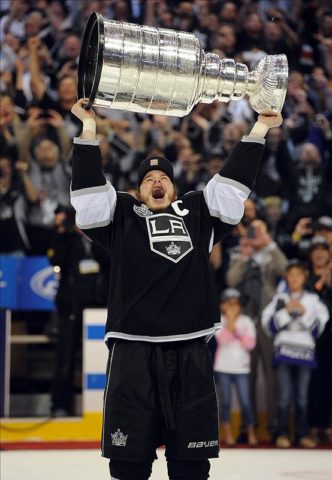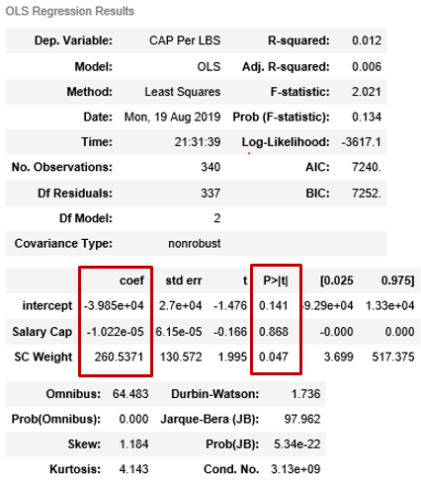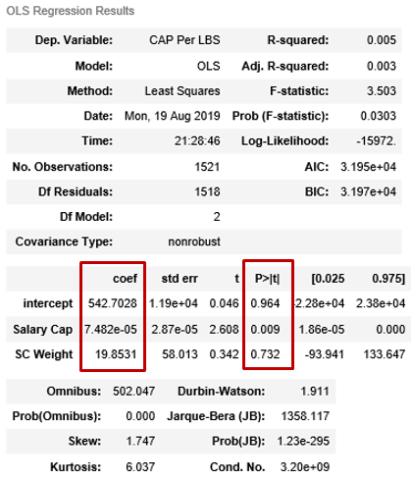When it comes to building an NHL roster through free agency, it does not pay to copy the blueprint of the reigning Stanley Cup champions. There is a tendency for NHL teams to make rash decisions at the beginning of free agency, and the data indicates that those decisions are at least partially driven by a desire to acquire players in the mold of the Stanley Cup champions.

Following the St. Louis Blues’ 2019 Stanley Cup victory, there has been much discussion about “heavy” hockey returning to the NHL. The Blues played a physical game throughout the playoffs and sported a roster filled with large players. I have already discussed why I think the consensus takeaways from these playoffs are incorrect. Size is an asset, but only when it is combined with skill. With that being said, just because I do not agree with the consensus does not mean that NHL general managers are not building their rosters based on perceptions drawn from the playoffs. It is a copycat league and roster decisions can be swayed by a perceived winning formula based on the Stanley Cup champions.
Teams Follow the Lead of the Stanley Cup Champions on July 1
I collected data on contracts given out on July 1 to free agents from 2006 to 2019. One clear factor of a Stanley Cup champion is the size of the team. The Los Angeles Kings, with a roster averaging an enormous 209 pounds during the playoffs, brought size back in style in the early 2010s before it lost its luster with the Pittsburgh Penguins who weighed 11 pounds less on average than the Kings. The Blues and Washington Capitals, however, in the past two seasons have won with prominent large players, and size is again a pre-eminent trait teams look for when acquiring players.

The size of the reigning Stanley Cup champions has an impact on the contracts given to large players in free agency. I created a variable called Salary Cap Hit Per Pound (CPP), showing a player’s salary cap hit divided by their weight in pounds for each player given a contract on July 1 for the past 13 seasons. I focused on weight because there was a much larger variation among teams in terms of weight than in height. I then gathered data on the average weight for each of the last 13 Stanley Cup champions.
Using my data set, I ran a linear regression using my CPP as the dependent variable with the weight of the Stanley Cup champion during a given season as an independent variable. I also included the salary cap during a given season as a control variable because we would expect salaries to increase in seasons when the salary cap increased. The output from the regression is below:

For those who do not have a statistics background, I would like to focus on the coefficient and p-value for each of my variables as outlined above. The coefficient is the numerical impact that the variable has on the CPP. The p-value shows whether a variable has a statistically significant impact on the CPP. In general, we look for p-values to be less than 0.05 in order for a variable to be significant.
This model does not capture most of the reasons why a player is given a specific contract, but it still provides some interesting insight. First of all, the average weight of the Stanley Cup champion does have a statistically significant impact on the CPP a player earns on July 1. The coefficient is not all that large, but the fact that the variable is significant is meaningful.
This indicates that the size of a Stanley Cup champion does have an impact on the type of players that opposing general managers pursue in free agency. In theory, we would expect a constant price for size baked into a player’s contract that would increase as the salary cap increases. The fact that there are fluctuations in CPP means that teams are either overvaluing or undervaluing size dependent on the size of the Stanley Cup winners.
The second really interesting insight is that the current salary cap does not have an impact on the contracts players receive on July 1s. This indicates that teams are making rash decisions on July 1 in order to make sure they are acquiring their targeted player without regard for how much money they can spend under the current salary cap.
Patience Is Important in Free Agency
In order to see if these trends continue with contracts given out later in the summer, I ran another regression using data from July 1 to Sep. 30 for the past 13 seasons. The regression output is included below:

As expected, the salary cap now has a statistically significant impact on CPP. Additionally, we can see that the size of the Stanley Cup champion is no longer significant. It seems that after the beginning of free agency, teams are making smarter decisions and paying attention to the salary cap.
General Managers Should Look for Relative Value in Free Agency
There are two key takeaways from this statistical analysis. The first is that it is important for NHL general managers to take a step back on
July 1 and think about what factors are driving them to make their desired player personnel decisions. If they find themselves trying to copy the success of other teams, they should re-examine the players they are trying to acquire.
In 2016 and 2017, the Penguins won back to back Stanley Cups. They were perceived as fast and on the smaller side. During the offseason following their cup wins, many teams focused on acquiring skilled offensive players who could move the puck with pace and skate well. Size had become far less important to teams. In the summer of 2016, Eric Staal, who is a 6-foot-4 and 207 pounds forward not known for his skating ability, signed for a $3.5 million cap hit per season. He signed that contract after an admittedly down season for him. Meanwhile in 2017, Kevin Shattenkirk, a small defenseman known for his puck movement, but not his defensive ability signed for a $6.65 million cap hit.

If we fast forward to this offseason, Eric Staal is coming off of his third straight season of 50 or more points, including two seasons where he hit the 60 point mark. His contract has been an absolute steal for the Minnesota Wild. Kevin Shattenkirk, on the other hand, was just bought out of his massive contract with the New York Rangers and signed with the Tampa Bay Lightning for a $1.75 million contract over one season. I believe that contract by the way, if you are at all following my logic, will be a great deal because the size trend is back, and Shattenkirk is coming off of one of the worst seasons of his career (It also doesn’t help that his former teams won the last two Stanley Cups). Combining a change in perception with a down season can make a player’s perceived value decline at an even higher level.
The second takeaway is that it is important to be patient in free agency. Teams make poor decisions on the first day of free agency because there is a lot of competition for players. A team would do well to wait until the dust clears and allow other teams to make the July 1 mistakes. Bargain deals are made every summer. There are still quality free agents available this offseason who have not signed with a team.
The other benefit of avoiding the bad contracts given out at the beginning of free agency is that it allows a general manager the cap room to take advantage of other teams. One great example from this summer is the New Jersey Devils acquiring PK Subban from the Nashville Predators for the relatively low price of two second-round draft picks, Steve Santini and Jeremy Davies. I believe that will end up being a great deal for the Devils and they were able to make it because the Predators needed cap room.
In free agency, teams should be paying attention to relative value, meaning whether a player is over or undervalued. Teams will make poor decisions based on the player personnel trends at the time. A general manager who understands relative value will be able to build a phenomenal roster. It will take patience in free agency to take advantage, but if a team follows their own strategy without being swayed by a perceived winning formula, it could pay huge dividends.